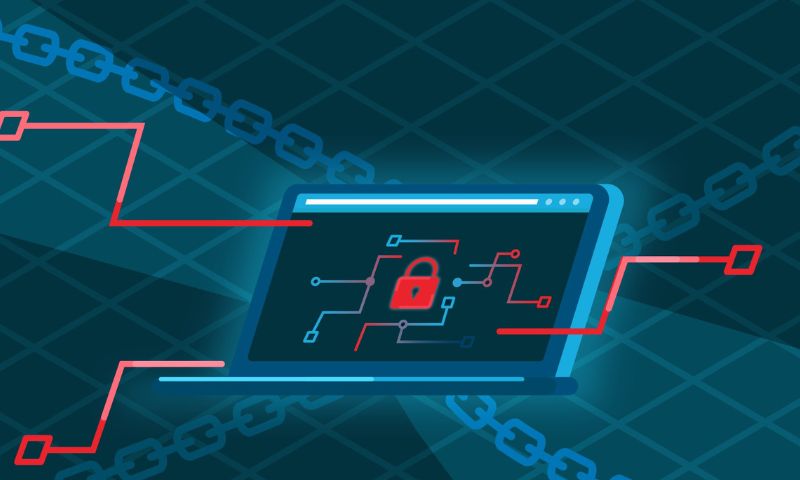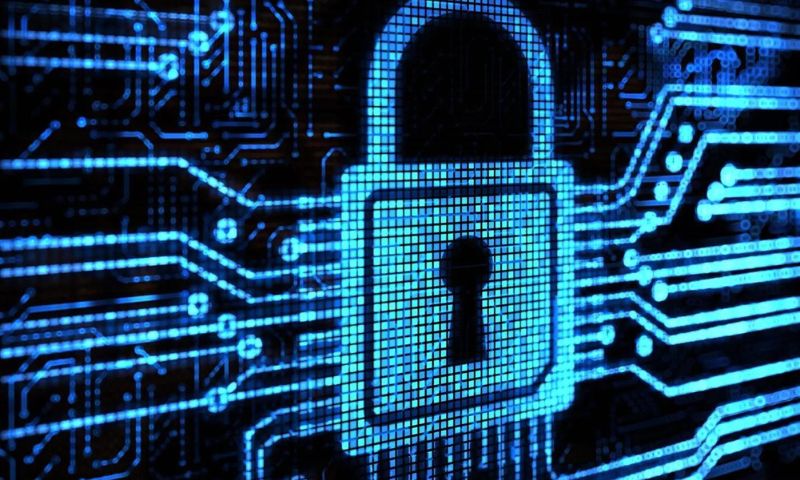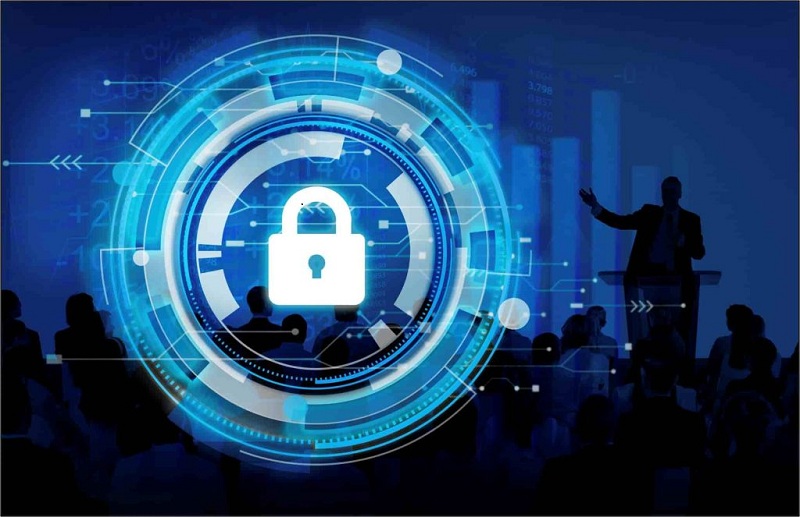New threats to blockchain security keep showing up, making headlines and unsettling investors. You might think your crypto is safe, but is it really? You’ve heard how secure blockchain is, with its complex cryptography and decentralized nature. But did you know that fresh dangers are creeping in, challenging what we thought was bulletproof? In this no-nonsense guide, I’ll walk you through what’s lurking in the digital shadows. From the quantum leaps that could shake blockchain’s foundations to the network flaws crafty hackers exploit, you’re about to learn how to armor-up your assets. So, let’s cut to the chase and dive deep into the evolving battleground of blockchain security.
Understanding Quantum Computing’s Impact on Blockchain Security
The Future of Cryptography in the Quantum Era
Today, we face a big tech challenge. Quantum computers are coming. They might break the codes that keep our crypto safe. I want to tell you about this problem. Then, I’ll show how we can fight back.
Let’s talk about quantum risk in blockchain. Quantum computers can solve puzzles fast. Very fast. This means they could crack codes that take normal computers ages. Right now, blockchain uses math to stay secure. Against regular hackers, it’s strong. But quantum computing could change that. It could let bad guys break in and steal.
Blockchain keeps a record of who owns what. It’s like a giant, secure ledger. But what if someone could change that ledger? That’s what quantum computers might do. This is why we need new math. Math that quantum computers can’t solve easily.
Enhancing Blockchain Protocols Against Quantum Attacks
So, what do we do? We make blockchain stronger, with new rules. We call these rules ‘protocols.’ Quantum attacks can come out of nowhere. They’re like a ninja in the night. Our job is to build walls too high for ninjas to climb.
One big worry is the 51% attack. This happens when someone controls more than half the network. They become the boss and can double-spend, like magic. To stop this, we must make our network like a round table. Where no one is the king.
Next, we have smart contract flaws. Smart contracts are like deals that run themselves. But if they’re not written well, they’re weak spots. Hackers love weak spots. We find these flaws before the bad guys. Then, we fix them up tight.
Blockchain network attacks keep changing. They’re a moving target. We’ve got to keep our eyes open and shields up. If one part of the blockchain gets hit, the whole thing could fall. We stop this by joining hands. My node looks out for your node. That way, we all stay safe.
We’re in this together. I take care of finding these risks. Then I come up with ways to keep our crypto safe. You might not see these ninja moves, but they’re there. And when they strike, we’ll be ready. Because I’m working on it, and your blockchain is becoming quantum-proof.
The Evolving Landscape of Blockchain Network Attacks
Risks of 51% Attacks and Possible Countermeasures
A 51% attack happens when one group controls most of a blockchain. This lets them unfairly change or stop new transactions. They can also double-spend coins, which means they spend the same digital currency twice. This risk is real, but there are ways to fight it.
One way is to use more powerful computing to protect the blockchain. This makes it harder for a group to gain control. Another way is to change how the blockchain confirms transactions. Some blockchains now need many different users to agree on new entries. This stops one group from taking over.
A neat trick is to watch how the blockchain works. We can get early warnings of a 51% attack this way. Then, users can quickly stop using the blockchain until it’s safe again. Developers are also always working on new fixes to keep blockchains safe.
Identifying and Preventing Emerging Smart Contract Flaws
Now, let’s talk about smart contract flaws. These are like secret doors that hackers can find and use to steal or cause trouble. It’s a big problem because smart contracts handle lots of money and private info.
To keep smart contracts safe, understanding how they work is key. They are like rules written in code. If the code has mistakes, hackers can use them. But by testing the smart contracts well before using them, we can find and fix these mistakes.
One great tool is something called a security audit. Experts check the smart contract code for any flaws. By doing this, they find weaknesses before hackers do. You could say it’s like a practice drill for the security of the blockchain.
Another cool way to stay safe is to keep learning about new threats. We can join groups or forums where experts talk about the latest dangers. Then, using special software, we can protect our smart contracts from these new tricks.
Both these risks – the 51% attack and smart contract flaws – are serious. But the good news is that smart people are working hard to stop them. By using these countermeasures, we can help keep our money and info safe on the blockchain.
Safeguarding Digital Assets from Advanced Threat Vectors
Tackling the Double-Spending Problem with Improved Consensus Mechanisms
What is the double-spending problem? It’s when one digital token gets spent more than once. This could wreck any currency. Bitcoin fixed this with blockchain tech. How? By a network agreeing on all money moves, known as consensus.
But threats like a 51% attack can break this trust. What’s a 51% attack? It’s bad news. It means someone has control over half the network’s mining power. They could block new transactions or reverse ones while they’re in control.
Blockchains need iron-clad rules to stay safe. We call these rules consensus mechanisms. With better ones, we beat bad actors and their tricks. This means even if someone wanted to, it’d be real hard to pull off a double-spend.
Addressing DeFi Security Breaches Through Robust Frameworks
Now, what about DeFi, or decentral finance? DeFi’s a big deal because it cuts out the middleman in financial services. But security breaches are a thorn in its side. Why care about DeFi breaches? Your crypto wallet could end up empty.
The best move? Stricter, smarter security frameworks. These are like digital armor. Picture a high-tech safe for your digital coins. With these in place, we can fight off sneaky attacks on our funds. We do this by outsmarting gaps in smart contracts. Smart contracts are like robot deals. They work without humans but can have flaws.
Lastly, we should talk about blockchain network attacks. These can be complex, like DDoS, or phishing. It’s when bad guys flood the system or trick you into errors. What defense do we have? Think of it as building a digital fortress around our crypto. Stronger defenses make these guys frown.
By solving these puzzles, we keep our digital bucks secure. I keep my eyes wide open for risks, like blockchain vulnerabilities in 2023 and quantum computing. I study these so we stay safe from quantum threats. In the end, we all want our digital assets locked down tight. We all aim to keep our cryptos off the bad guys’ radar.
Building Resilience Against Sophisticated Blockchain Exploits
Mitigation Strategies for Zero-Day Exploits and Ransomware
Hackers love surprises. They use new tricks, called zero-day exploits, attacking before we can fix them. Now, these sneak attacks are targeting blockchains. Imagine finding out your crypto is all gone. Scary, right? We must act fast.
What can we do? Update, update, update. Like a shield, keeping security software fresh stops many attacks. Get everyone on board to spot threats. Even one click can help catch a zero-day before it pounces.
Watch for ransomware too. It kidnaps your data, asking for ransom. But paying up doesn’t always free your data. Tighten your digital locks. Use multi-layer security. Create backups. Never let your guard down.
Protecting Private Keys and Crypto Exchanges from Unauthorized Access
Private keys are like secret codes to your crypto. If thieves grab them, they take your crypto. We need to hide these codes well. Use hardware wallets, complex passwords, and never share your secret. Be a tough nut to crack.
Crypto exchanges are where we trade. But hackers see them as gold mines. We must guard them like fortresses. Strong passwords, two-factor authentication, and regular checks are your armor. Keep your crypto safe with eagle eyes.
Stay smart. Stay safe. Let’s make our crypto world a no-go zone for hackers.
In this blog post, we’ve looked at how quantum computing could shake up blockchain security. We’ve seen new risks it brings, like to encryption, and ways to boost blockchain defenses against fancy quantum tricks. Then, we tackled the broader issue of blockchain network attacks, talking about 51% attacks and smart contract flaws, plus how to stop them.
We also covered how to protect your digital money from tricky problems like double-spending and attacks on DeFi, which is finance using digital tech. Lastly, we discussed smart moves to defend against sneaky new attacks and how to keep crooks away from your private keys and crypto exchanges.
Quantum tech brings challenges, but with sharp minds and tight security, we can keep blockchains safe. By staying alert and adapting quickly, we can be one step ahead of the bad guys and make sure our digital goods stay in the right hands. Let’s keep pushing for tougher security to protect our online world. It’s worth the effort.
Q&A :
What are the emerging threats to blockchain security?
With the continuous advancements in technology, blockchain systems are facing new challenges such as the rise of quantum computing, which could potentially break cryptographic safeguards. Another emerging threat is the increasing sophistication of phishing attacks specifically targeting crypto wallets. Additionally, Smart Contract vulnerabilities, including bugs and flaws in contract design, pose significant risks. The growth of blockchain interconnectivity also opens up systemic risks where a vulnerability in one blockchain could potentially affect connected chains.
How can quantum computing impact blockchain security?
Quantum computing poses a significant threat to blockchain security due to its potential to break traditional cryptographic algorithms that underpin most blockchain networks. Current encryption methods, such as RSA and ECC (Elliptic Curve Cryptography), might become obsolete with the advent of sufficiently powerful quantum computers. Blockchain networks are exploring post-quantum cryptography to mitigate these risks, ensuring that the encryption methods remain resistant to quantum attacks.
What role do smart contracts play in blockchain security concerns?
Smart contracts are self-executing contracts with the terms of the agreement directly written into lines of code. While they are a foundational aspect of many blockchain platforms, they can also be a source of security concerns due to potential vulnerabilities within the contract code. If a smart contract has a bug or a poorly written function, it can be exploited, leading to unauthorized access or the loss of funds. The decentralized nature of blockchain means that any exploit can have immediate and irreversible consequences.
How can blockchain users protect themselves from security threats?
Blockchain users can take several measures to protect themselves from security threats, including using hardware wallets to store cryptocurrencies, which are considered more secure than software wallets. Regularly updating wallet software ensures the latest security patches are in place. Users should also be cautious of phishing attempts by verifying all communication and web addresses from exchanges or wallet services. Additionally, enabling two-factor authentication (2FA) provides another layer of security for user accounts and transactions.
Are there any regulatory measures in place to mitigate blockchain security threats?
Regulatory measures for blockchain security are still in development as the technology is relatively new and constantly evolving. Some countries are beginning to implement guidelines and regulations that address the security of digital assets, including know-your-customer (KYC) and anti-money laundering (AML) compliance. These measures aim to provide a safer blockchain environment by preventing illicit activities. As the industry matures, it’s expected that more comprehensive regulations will be put in place to address and mitigate security threats specific to blockchain technology.


